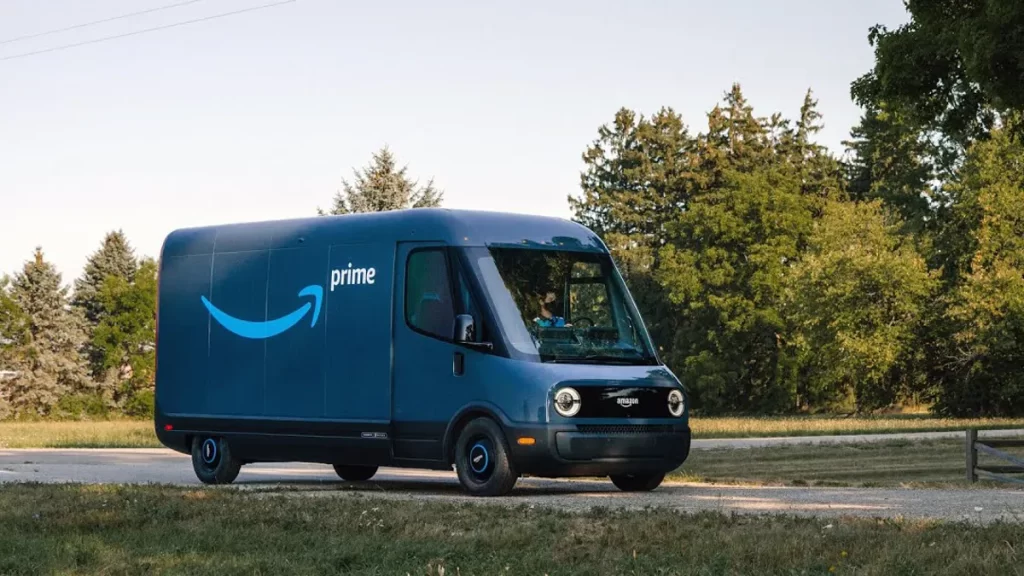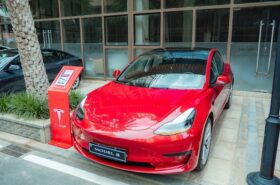Climate change is a multi-trillion-dollar problem that needs a lot of effort and resources to solve. The big technology companies, including Apple, Google, Microsoft, Facebook, and Amazon, have a huge role to play in the fight for a cleaner environment. These five companies alone are worth over $8 Trillion, so they have the potential to invest in projects, ideas, and initiatives geared toward creating a green environment.

The good news is that all the above tech companies have done something to help the world achieve our ambitious goal of being carbon neutral by 2050. In today’s article, we will share with you some of the major contributions made by these companies toward achieving this goal. Let’s get started!
What Apple is Doing to Become Carbon Neutral

Apple is currently the most valuable company, with an estimated market cap of over $2.5 trillion. So, they definitely have the resources required to streamline their operations towards carbon neutrality. Apple set a target of becoming carbon neutral by 2030. This is an ambitious goal that requires taking serious action to achieve. Here are some of the steps Apple is taking to achieve its carbon neutrality goal.
1. Apple are embracing renewable energy across all operations.
All the infrastructure that is directly owned by Apple is powered by renewable energy. This includes all the different data centers around the world powering all the Apple services, including iCloud, Music, Arcade Games, and more. It also includes retail stores, offices, and several other facilities in over 43 countries, including the US, UK, India, and China.
Apple Park, the company’s headquarters in Cupertino, has its entire roof filled with solar panels, which provide over 17 megawatts of energy. Besides the infrastructure that Apple owns directly, Apple is also helping its suppliers to adopt the use of clean energy in their operations.
2. Use of recycled material in their products

All Apple products, including the iPhone, Macs, and AirPods, use over 20% recycled materials. This reduces the natural resources that would otherwise be wasted if the company used fresh earth materials for all their products. Apple also gives a credit to users who return faulty devices and parts, including batteries and screens, whenever they bring them for repair at the Apple Stores or when using Apple’s self-service repair program.
3. Apple is making its products more power efficient.

One of Apple’s underrated climate change efforts is the continuous improvement of their products to make them more power efficient. Their recent generation of chips, including the M1 and M2, consume almost half the power to deliver the same level of performance as intel chips. This significantly lowers the energy consumption of these devices, reducing the carbon footprint of the people using them.
Most consumers of Apple’s recent M1 and M2 MacBooks charge their devices about once in 2 or 3 days instead of charging every day as they used to do with previous generations. All this is because the more efficient M1 and M2 chips use very little power to do tasks that usually require a lot of power.
Apple also made a controversial move of removing charger bricks from some of their products, including the iPhone. Their reason for doing this was to reduce the massive e-waste created by redundant power bricks that most people throw away as soon as they buy a brand phone.
4. Apple funds climate change projects
In 2021, Apple announced a $200 Restore Fund to invest in climate change projects such as forestry. To achieve its carbon neutrality goals by 2030, Apple plans to directly eliminate 75 percent of emissions from its supply chain and products, and the Restore Fund will help address the other 25 percent of its emissions.
This fund will be managed by non-profits, including Conservation International and the Goldman Sachs group. The company also intends to work with companies such as Forest Stewardship Council and Verra to determine the best projects where this money can be invested.

What Google is Doing to Become Carbon Neutral

Google is another trillion-dollar tech company with a huge role to play in helping the world achieve the ambitious goal of being carbon neutral by 2050. Just like Apple, Google also aims to be carbon neutral by 2030. Here are some of the things Google is doing to achieve its goal of carbon neutrality.
1. 100% use of renewable energy in all its data centers
Google is likely the company with the most data out there. Sorting all this data to give people the most relevant information in search, maps, YouTube, and other platforms requires massive computing power. As of 2017, all the computing done by Google’s data center was powered by renewable energy. In fact, Google was the first among the big tech companies to use 100% renewable energy in all its operations.

2. Improvement in maps and other services

If you search for anything related to travel, Google will include the efforts the different accommodation facilities have made towards climate change. This will help customers that are cautious about reducing their carbon footprint to choose facilities that are more committed to becoming carbon neutral.
When you search for appliances, google will show you suggestions for the more eco-friendly options you can buy. This gives users the chance to choose the most efficient appliances that will not only reduce their energy bills but also reduce their annual carbon footprint. In maps, Google also shows you the most fuel-efficient route you should take to cut your gas bills and reduce the emissions you release to the environment.
It should be noted that some of these features are not available in every country. Having these features in every country may require the input of governments and other relevant stakeholders.
3. Use of recycled materials in its products
Google is not known for making lots of hardware products. However, they have embraced the idea of using recycled materials in their hardware products, including Google Pixels phones, pixel buds, and Chromebooks. For instance, the frames of their recent Google Pixel phones are made from 100% recycled aluminum.

What Microsoft is Doing to Become Carbon Neutral

Like Google and Apple, Microsoft’s goal is to be carbon neutral by 2030. Microsoft is mainly known to be a software company. However, it has recently introduced some hardware products, such as the Surface line of devices. Becoming carbon neutral requires the company to make some changes in its operations and invest in climate change projects. Let’s take you through the actions Microsoft is taking to achieve carbon neutrality.
1. Microsoft climate innovation funding
In 2020, Microsoft committed to investing $1 billion in climate change projects that align with its core business. One of the main goals is to fund emerging climate technology solutions that have early commercial traction and need capital to scale in the market. Microsoft will also use this fund to invest in existing businesses creating products to fight climate change.
This fund can be accessed by anyone or a company with innovative ideas or projects geared towards fighting climate change. You can follow this link if you want to be part of those that benefit from this fund.
2. Use of renewable energy in its operations

Microsoft is working toward using clean energy in all its operations, including the supply chain, by 2025. The company’s massive data centers that power services like Microsoft Azure, Microsoft 365, and LinkedIn will all be powered by renewable energy sources by the end of 2025.
3. Microsoft built their own sustainability calculator

Microsoft launched its sustainability calculator in 2020 to enable users to analyze their estimated emissions from Azure services through a Power BI dashboard. This helps them to have a good understanding of their emission every time they use these Microsoft platforms. Microsoft also encourages its users to bring their applications to the cloud, which they claim will reduce their carbon footprint by up to 98%.
My only wish is if they could create a reliable sustainability calculator that we can all use to track the carbon footprint of our day-to-day activities beyond using Microsoft’s cloud services. With the amount of data and technology at their disposal, they can surely create a more reliable carbon footprint calculator than most of the versions out there.
What Facebook/Meta is Doing to Become Carbon Neutral

Facebook also has a familiar sustainability goal; they want to be carbon neutral by 2030. Being a software-first company, Facebook’s primary source of emissions is mainly its data centers which use a lot of energy to deliver the computing power required to give users real-time access to information on platforms, including Facebook and Instagram. Here is what the company has done toward achieving carbon neutrality by 2030.
1. Investment in renewable energy
Facebook’s operations are powered by 100% renewable energy. This includes their data centers and office operations in various countries across the world. During the 2020 covid19 pandemic, the company bought renewable generation of the equivalent of the electricity consumed by employees working from home. This was a move to ensure net-zero operations even when their workers were working from outside the company’s premises. Meta has also invested in carbon removal projects to reach net-zero. Some of the projects they have invested in include forest conservation and restoration in Africa and Mississippi. The company claims these projects led to over 145,000 tonnes of carbon removal per year.

2. Climate Science information centers on Facebook.

The company introduced climate science information centers on Facebook to help its users get access to credible information about climate change from the world’s leading climate change organizations. The company has also updated its algorithm to add misinformation labels to posts with false or unproven facts about climate change.
When a user clicks on the label, it leads them to sources in the climate science information center with more accurate facts. Of course, this system is not perfect yet, but it is a step toward helping users on the most popular social platforms access credible information about climate change.
What Amazon is Doing to Become Carbon Neutral
Amazon is also a multi-trillion-dollar company that has a huge role to play if we are to achieve our goal of carbon neutrality by 2050. Unlike the other tech companies, Amazon plans to achieve its carbon neutrality goal by 2040. This is understandable due to their massive product distribution and logistics infrastructure. Here are some of the things they are doing to achieve their carbon neutrality goal of 2040
1. Using EVs to make shipments

Amazon has ordered a fleet of 100,000 electric vehicles to be used in the distribution of products to their customers. The company is partnering with Rivian, one of the new players in the game, to make these EVs. Thousands of these delivery EVs will be getting on the road by the end of this year. This is one of Amazon’s strategies to achieve its 50% net-zero goal across all its shipments by 2030.
2. Investing in renewable energy
Amazon is also heavily investing in renewable energy to ensure all its operations are carbon neutral by 2025. This includes all AWS data centers that power millions of websites and web applications on the internet. It should also be noted that the company’s AWS infrastructure is already 3.6 times more energy efficient than the median of surveyed U.S. enterprise data centers.
3. Carbon emission reporting
Just like Microsoft, Amazon also offers AWS users what they call a “Customer Carbon Footprint Tool” that they can use calculate the carbon footprint of their AWS workloads. This tool is meant to help users know the impact of their work on the environment.
4. Data center construction
Besides using renewable energy, Amazon is also constructing its data centers using steel made from renewable energy and up to 100% recycled content.
Bottom line

Those are some of the major steps the big tech companies are taking to fight climate change. Most of them have set the goal of being carbon neutral by 2030, with Amazon extending theirs to 2040. It is important to note that some of these companies’ efforts will require the input of users that rely on their products in their day-to-day activities.



